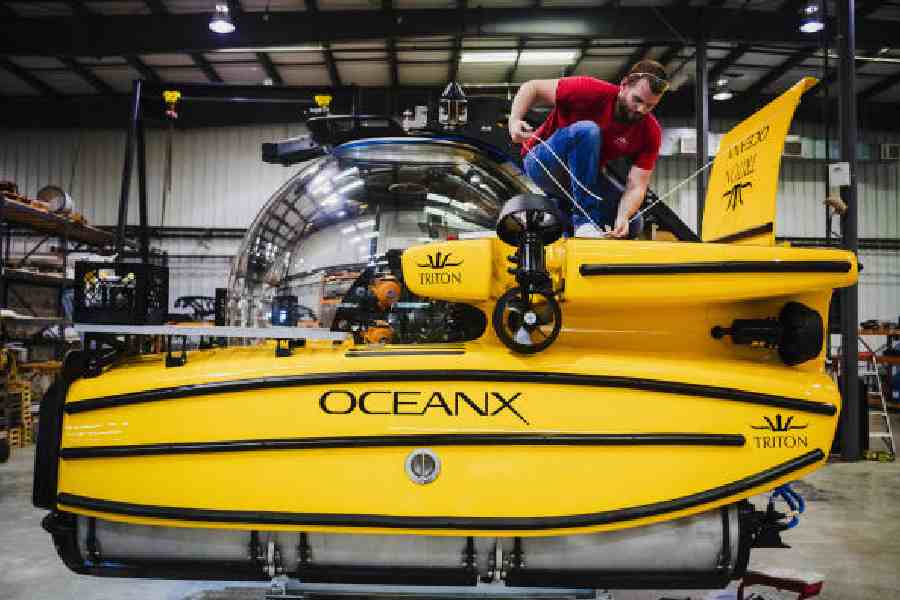Some were fabled vessels that have fascinated people for generations, like Endurance, Ernest Shackleton’s ship that sank in the Antarctic in 1915. Some were common workhorses that faded into the depths, like the Ironton, a barge that was carrying 1,000 tons of grain when it sank in Lake Huron in 1894.
No matter their place in history, more shipwrecks are being found these days than ever before.
“I also think more people are paying attention,” said James P. Delgado, an underwater archaeologist based in Washington, D.C., US. He added: “We’re in a transitional phase where the true period of deep-sea and ocean exploration in general is truly beginning.”
So what’s behind the increase?
Experts point to a number of factors. Technology, they say, has made it easier and less expensive to scan the ocean floor. More people are surveying the ocean for research and commercial ventures. Hunters are looking for wrecks for their historical value, rather than for sunken treasure. And climate change has intensified storms and beach erosion, exposing shipwrecks in shallow water.
Free-swimming robots, known as autonomous underwater vehicles, are much more commonplace than they were 20 years ago, and can scan large tracts of the ocean floor without having to be tethered to a research vessel, says J. Carl Hartsfield of the Oceanographic Systems Laboratory at the Woods Hole Oceanographic Institution in Massachusetts, US. Remotely operated vehicles can move 25 miles under the ice sheet in polar regions, he said. And satellite imagery can detect shipwrecks from plumes of sediment around them that are visible from space.
“The technology is more capable and built on scientists’ budgets,” Hartsfield added.
Jeremy Weirich, director of Ocean Exploration at the National Oceanic and Atmospheric Administration (NOAA), US, said the expanded use of telepresence systems, which stream images of the ocean floor, has allowed more people to discover shipwrecks in real time.
“You can get investors to find out what happened to Amelia Earhart, but not to find cargo freighters,” Hartsfield said. “It’s all about the compelling story.”
Climate change too is playing a role. In late January, a 19th-century shipwreck washed ashore in the remote Cape Ray section of Newfoundland, Canada, causing a stir in the small community of about 250 people.
In 2020, a couple walking along a beach in St. Augustine, Florida, US, noticed wooden timbers and bolts sticking out of the sand. Archaeologists said the pieces were most likely remnants of the Caroline Eddy, a ship built during the Civil War that sank in 1880. They were probably exposed because of erosion caused by a storm named Eta and by Hurricane Matthew in 2016 and Hurricane Irma in 2017.
Those kinds of coastal discoveries may become more commonplace, Delgado said. “As the ocean rises,” he said, “it’s digging things out that have been buried or hidden for more than a century.”
Private treasure hunters still search for shipwrecks, hoping to find sunken gold. But their discoveries often become mired in legal battles, and rarely are their claims ever realised, said Deborah N. Carlson of the Institute of Nautical Archaeology, US, a nonprofit research organisation.
She pointed out that underwater archaeologist Peter Throckmorton once called ocean treasure hunting “the world’s worst investment”, and found that it “only benefits promoters and lawyers”.
Private claims to a sunken ship can be contested by nations or insurers. Spain, for example, defended its claim that it maintained ownership of a Spanish frigate sunk by the British in 1804 after an American treasure-hunting company found the shipwreck off Portugal in 2007 and took its trove of gold and silver coins.
The Unesco Convention on the Protection of the Underwater Cultural Heritage, 2001, sought to protect shipwrecks from looters and said countries should preserve them and other undersea relics “for the benefit of humanity”.
While treasure hunters still ply their trade, they have been joined by more commercial and research ventures that have expanded the realm of deep-sea exploration.
Phil Hartmeyer, a marine archaeologist at NOAA Ocean Exploration, said that more private research groups are also scanning the ocean floor and helping to move scientists around the world closer toward a goal of mapping the entire seabed by 2030.
NYTNS










